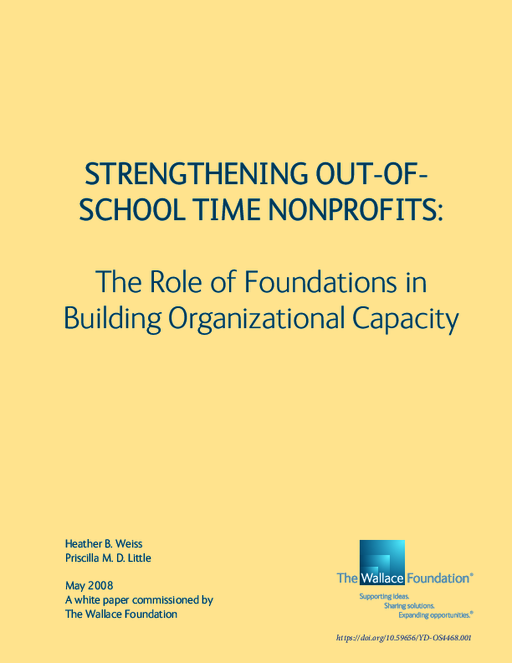Breadcrumb
- Wallace
- Reports
- Strengthening Out-Of-School Time...
Strengthening Out-of-School Time Nonprofits
The Role of Foundations in Building Organizational Capacity

Overview
More
Less
- Author(s)
- Heather B. Weiss and Priscilla M. D. Little
- Publisher(s)
- The Wallace Foundation
Summary
This paper addresses nonprofit out-of-school time (OST) organizations and how they might meet the challenge of developing stronger organizations. Specifically: how can they work together with other people and organizations in a community to create a system of diverse and high-quality learning opportunities for children, from pre-kindergarten through high school.
The paper points to seven options for investment by different entities at different levels to help improve the organizational capacities of OST nonprofits. In addition to building systems and organizational capacity, these options would help offer children and families, particularly those from underserved communities, the opportunity to choose from a network of learning and developmental supports.
The options for investment and capacity building in the sector are:
- Cultivate adaptive leadership in OST nonprofits
- Build and maintain networks
- Develop effective workforce systems
- Build capacity to benchmark for learning and adaptation
- Fund a study on the costs of developing organizational capacity
- Establish a capacity-building innovation fund
- Convene to position OST nonprofits in a new context for learning

